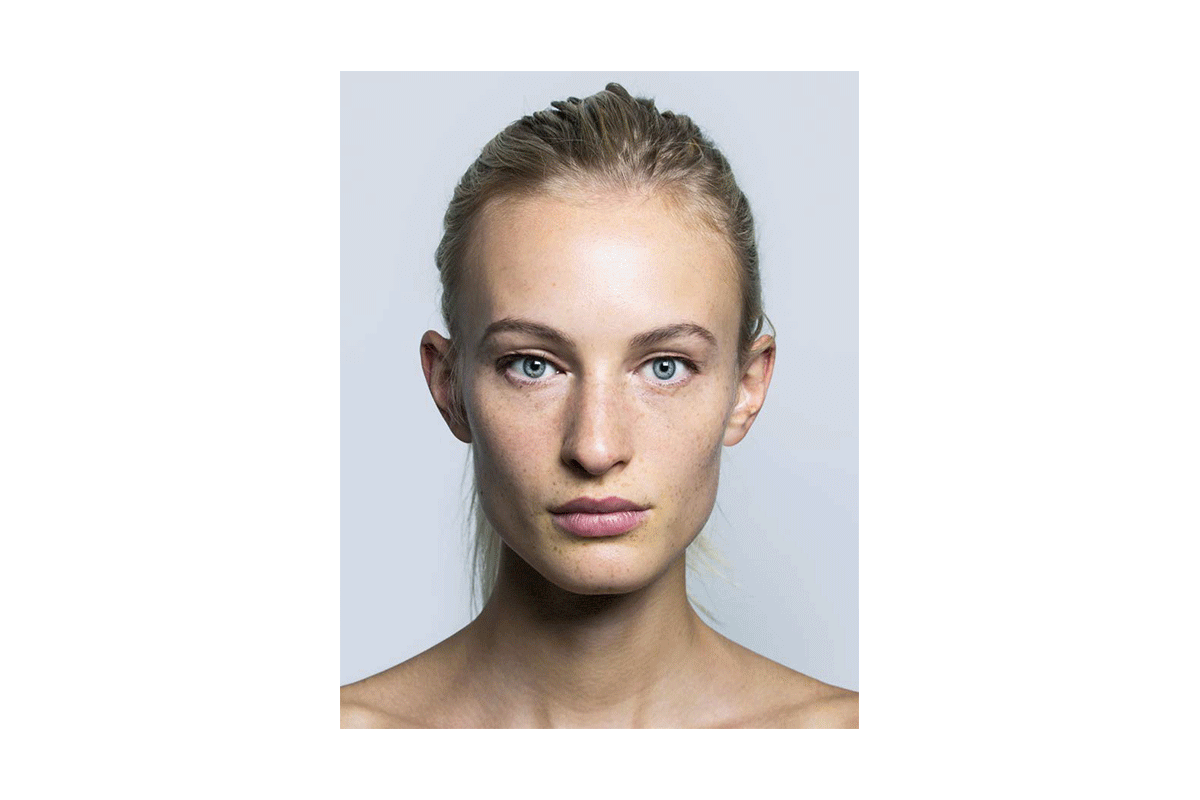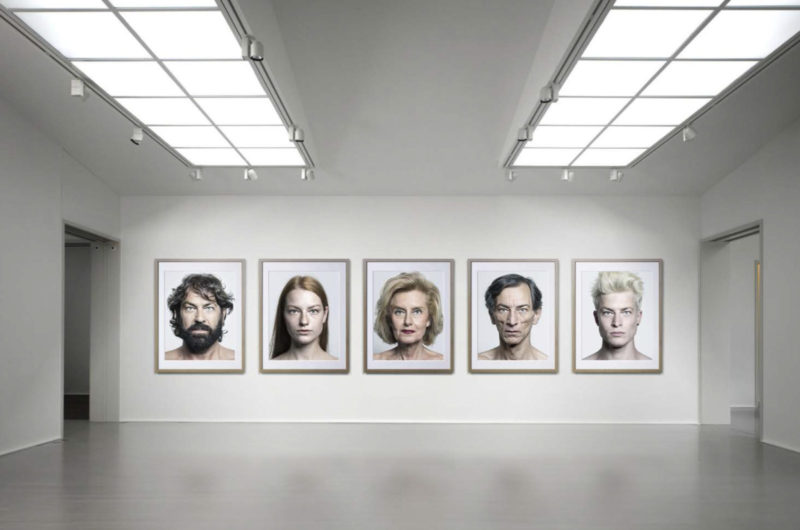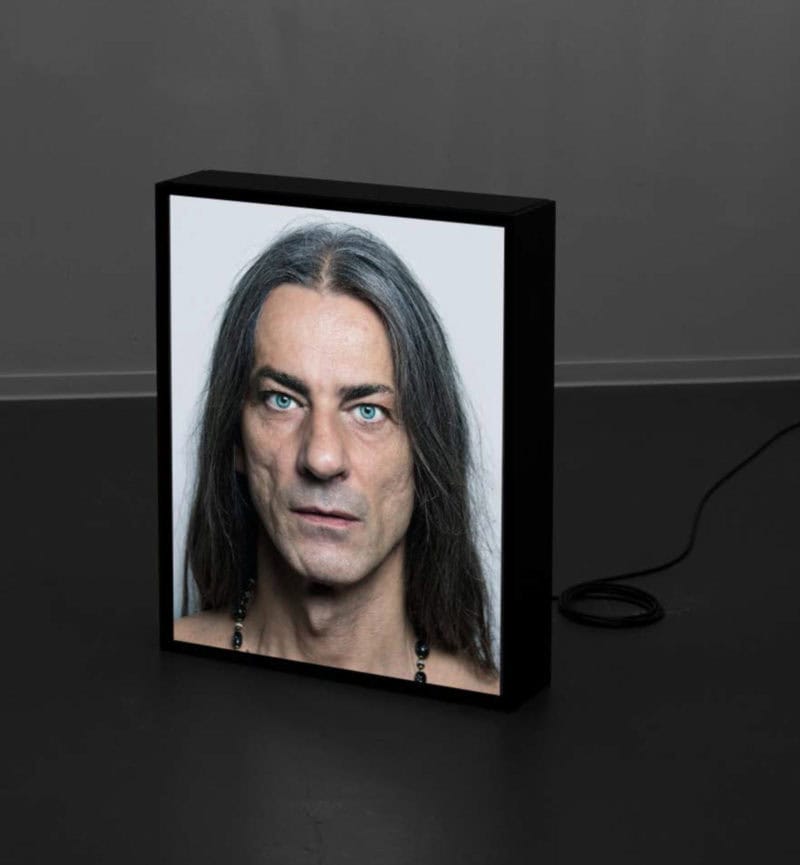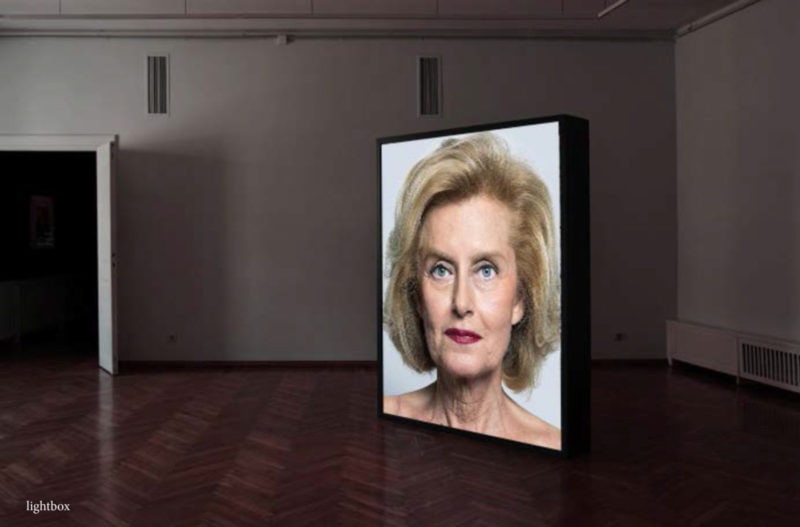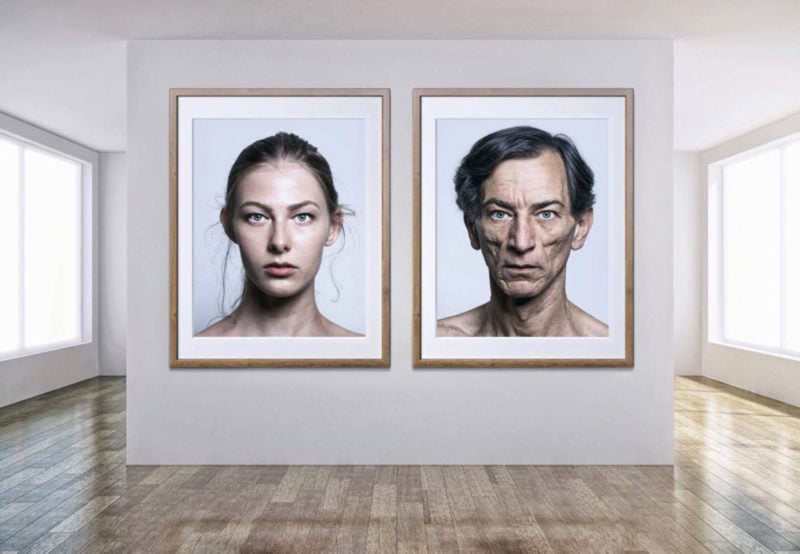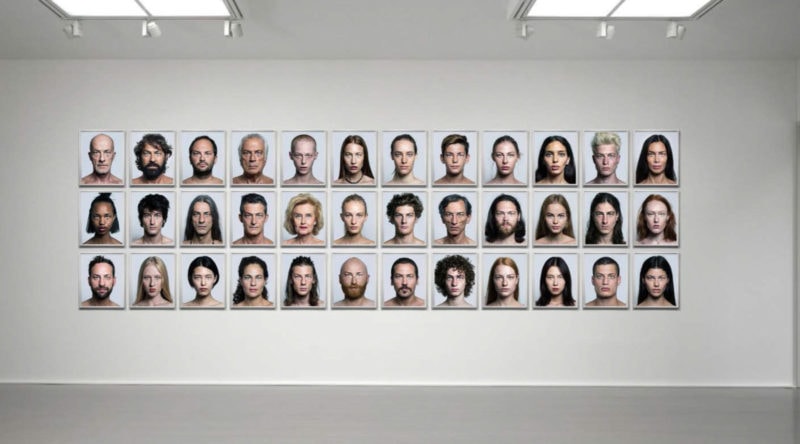“… in an image-dominated world where the revolution in technology and communication has created a public obsession with selfies, I do this only through the element that most reflects one’s personal identity, the eyes, which become the constant site of my artistic work.”
Our job is to be quick, clear and concise, and instant to draw the short attention of our readers. We do this by aligning the gaze, capturing the beauty with a single click.
The superfluous click explores the interview and application of your art in the real world/material: the installations.
We like to describe the person behind each project (although in this case, you were inside yours!). How did you manage your time while developing this series? How did you organize the days of shooting? Where were the photographs taken?
This is a reflective project; the shooting was the easiest part and, in some ways, the fastest. I did not take the pictures in my studio, but with a casting director which involved more than 500 people spread over 4 days of non-stop work. For me, the shooting is always a long working session; somewhat like a performance. The days are brimming with expectation, interacting with the people taking part in my project.
I try to speak to them and explain the meaning of my work. They develop a passion. Some are nervous and choose not to pose or even not to take part, while others don’t even wink – as a gesture of pleasure.
I try to alleviate their worries somewhat. What I am interested in is the silence in their faces; in which lies the real truth. A face must contain a multitude of expressions, not just one. I guide them in this trying to get the portrait I’m looking for, as quickly as I can.
The real work, as always, comes afterward. Selecting the faces is a long, complicated task.
Eyedentikit is about one’s personal identity; it is about “the illusion of living one’s own existence”; but, in the end, an overall vision emerges (one with a dystopian flavor, perhaps?). How do you experience the gap between our “genuine” identity and the one we create online?
Nowadays we have more than one identity, and we coexist happily with all of them, switching from one to another with total ease. From the masks of Independence from some years ago to Eyedentikit – research into identity is a recurring theme in my work. Eyedentikit is the space created between the subject being photographed and – the artist – who takes the photograph.
In this space, a new identity is created. It’s a way of revealing a new point of view, a new identity; I say revealing, but the photographed subject also hides, revealing only a part of himself. Just as one does online, with his public identity. What we want to reveal about ourselves online is a new way of communicating ourselves to the world: where we are and how we feel; but above all, how far we’ve come or rather what we want to believe about ourselves.
For many, identity has increasingly become the pursuit of consensus. Likes and hearts are the new units of measurement of our lives.
I try to limit this type of interaction if I can. There is a public part of me that I want to reveal, but then, of course, there is a part that I don’t want to transmit online. I struggle to understand the obsessive pursuit of consensus at all costs; the constant wish to bare one’s soul. Identity is mostly about content. Online, you can diffuse just about any content, and likewise just about any identity.
We have gone from Barbara Kruger’s ‘I shop therefore I am’ of the 1990s, to ‘I post, therefore I am’.
Do you see something different through your eyes now?
I try to create a new point of view in others. My eyes are just a mean, not the end.
